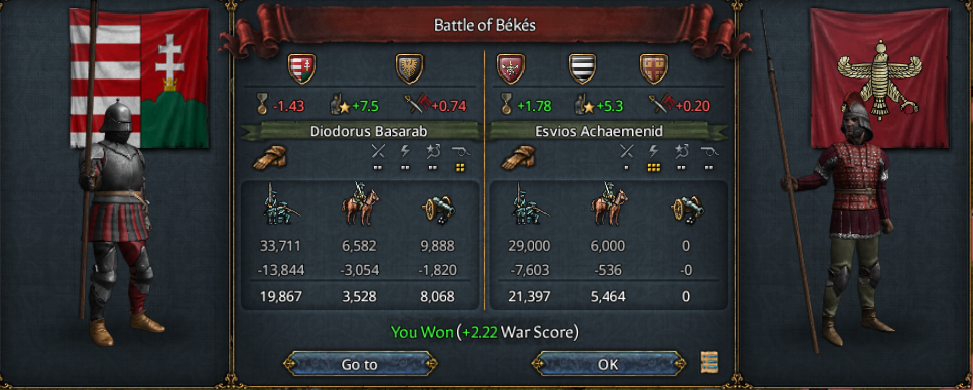The World in 1501 AD
Map of Europe, North Africa and the Near East in 1501 AD
A New World to Discover
As the 16th century dawned, the world began to turn its head West. A new world had been discovered by Iberian Christians looking for new routes around the Muslim and Orthodox forces in the Mediterranean. Captain Martinus Haemarus of Baetica was the first European to step ashore on an undiscovered continent and soon discovered opportunities for conquest and treasure from the natives, undreamt of by the rest of Europe. Many more Baetican men and ships would sail from Baetica to validate and enlarge the Christian presence. Portugal would soon join Baetica in capitalising on the opportunities there, allowing these two kingdoms to elevate themselves to a new level of prominence. The Romans had found their salvation against the Islamic threat. The treasure fleets of Baetica would sail back laden with gold to enrich the state coffers and allow them to hold down the Andalusian threat of Cordoba.
The Triangle Trade Easing the Bullion Shortage
The bullion shortage of the 15th century affecting Europe was due to the silver mines in Central Europe (such as those in Bohemia and Saxony) depleting or producing less metal than before. Combined by the fact that the European economy was highly dependent on luxury goods from the Middle East, India, and China (such as spices, silks, and porcelain), vast amounts of silver and gold were sent eastward via the Silk Road and Indian Ocean trade routes.
With Iberian states now bringing significant shipments of gold and silver, injecting it into the European economy. The influx of silver into Europe stimulated trade, expanded markets, and helped finance the rise of early capitalism. However, it also had major consequences, including inflation that would impact the Achaemenid economy. The rumoured riches would also trigger a gold rush from other states such as England and Axuchos to nail their own stake and claims to the new world.
A Snapshot of Western Europe
Iberia and Francia in 1501
Baetica
Baetica is ruled by Rex Marcellus II Deusdedit, a young yet ambitious monarch who ascended to the throne just five years ago following the death of his father. At only twenty-five years old, he stands at a critical juncture in history, poised to shape the destiny of Iberia and beyond. With the riches of the New World flowing into his kingdom, he seeks to expand his influence, not just in the western Mediterranean but across the shifting political landscape of Europe.
Despite the challenges of the past, Baetica has stemmed the tide of territorial losses against Andalusia, consolidating its defenses and reclaiming strategic positions along the frontier. His father’s last triumph - the capture of Gaelicia in the Iberian Northwest – has bolstered the reputation of the Deusdedits as true Roman warrior-kings. However, Marcellus' ambitions extend far beyond mere defense; he envisions himself as the leader of a renewed Christian
Reconquisita, determined to expel Muslim rule from the peninsula once and for all.
In this endeavor, he is not alone. The Francien state of Axuchos wages its own war against the Muslim-controlled lands of Aquitaine, a struggle that Marcellus sees as parallel to his own. A grand alliance of Christian powers—rooted in faith, history, and shared ambition—is forming. In Portugal, he finds a natural ally, one that shares his vision of a resurgent Latin Christendom. Together, they seek to reclaim the legacy of Rome and restore the rightful dominion of the Roman people over Iberia.
Baetica’s ambitions are fueled by the immense wealth of the New World. As gold and silver flood into Seville from across the Atlantic, Marcellus sees an opportunity not just to finance his campaigns but to secure his standing in the greater European order. His kingdom’s ports are bustling with merchants, explorers, and privateers, eager to carve their fortunes from the distant lands of the west.
Cordoba
The once-mighty Flavius-Melchos dynasty lies in ruin, cast down in the wake of a disastrous war against Baetica. In their place now rules Sultan Aderinola Umayyad, a man of ambition, cunning, and an unshakable belief in Cordoba’s destiny. Rising to power through a military coup, he has seized the reins of the Muslim Roman state with a singular purpose: to restore Cordoba’s supremacy in Iberia and to punish the Christian kingdoms that seek to undermine its rule.
With Andalusia renamed Cordoba – a symbolic use of that great city’s status – the new regime has embraced a policy of revanchism, stoking the fires of war against the Christian powers that press against its borders. While Baetica may have reversed some of Cordoba’s past conquests, Aderinola is determined to reclaim lost lands and reaffirm Cordoban dominance over Western Europe.
Despite its recent setbacks, Cordoba remains the most formidable power in Western Europe, boasting a military and economy that far surpasses its rivals. Its standing army, hardened from decades of border conflicts, remains one of the most experienced and disciplined forces in the region. Unlike its Christian adversaries, Cordoba enjoys deep ties to the Islamic world, drawing military and financial support from the rich states of North Africa and the Levant.
While the Sultanate has not yet turned to colonial expansion, it has nonetheless found a way to benefit from the New World’s riches. Cordoba’s strategic control over key trading ports along Iberia’s east coast allows it to tax, intercept, and profit from the massive silver flows coming from Baetica and Portugal. While it does not yet send its own ships across the Atlantic, Cordoba’s merchants and financiers have established a powerful trade empire, acting as intermediaries between Europe and the wealth of the Americas.
Axuchos
The House of Axuchos, once a family of Achaemenid conquerors, now reigns over the vast and unified Francian state. Though their name speaks of Byzantine origins, their hearts beat with the spirit of Francia—fierce, unyielding, and devoted to the cause of Orthodoxy. Under the leadership of Queen Ermensendis Axuchos, this once-fractured land has been reforged into a powerful kingdom, its people united under the banner of faith and the drive to expel the last remnants of Muslim rule from France.
Ermensendis, now in her fifties, stands at the pinnacle of her reign. For decades, she has waged war, brokered alliances, and steered Axuchos toward dominance. Yet with victory near, new dilemmas arise: when the Muslim threat fades, what will define the kingdom’s place in Europe?
Over the past century, the Axuchos have driven the Muslims of Aquitaine to the brink of collapse. Once, the south of France stood as a stronghold of Islamic power, a challenge to Christian rule in the region. Now, after decades of hard-fought battles, sieges, and strategic campaigns, the Muslim presence in France is reduced to a handful of isolated territories clinging to the edge of survival.
Through sheer force of arms and unwavering Orthodox faith, Queen Ermensendis has not only solidified Axuchos' rule over the north but also pushed deep into the south. Unlike the Achaemenid Empire, which rules through dominance and cultural supremacy, Axuchos has pursued a policy of careful integration and diplomacy. Coexistence has been a hallmark of their rule – at least with fellow Christians. Ermensendis understands that Francia's strength lies not just in its armies but in its ability to hold together diverse Christian peoples under a single faith and banner.
Despite Axuchos' military might, the kingdom has not sought open confrontation with its Christian neighbors. With the Muslim hold on France near its end, Ermensendis now faces a dilemma. What will unite the Francians once their great enemy is gone? Will they continue their policy of coexistence, or will they seek greater ambitions – perhaps challenging the rising Latin powers like Baetica and the Holy Roman Empire?
The Holy Roman Empire, Electors and Emperor in Brabant
The Holy Roman Empire
Once a symbol of unity and imperial grandeur, the Holy Roman Empire now stands as a fractured and fragile remnant of its past. What was once a realm that sought to recapture the glory of ancient Rome is now a loose confederation of squabbling princes, divided by ambition, faith, and regional interests.
The empire’s decline became inevitable after Italy broke away, unwilling to remain under the thumb of German overlords. Only a few Italian princedoms – Genoa, the Papacy, and Campania – still cling to the imperial system. Genoa and the Papacy remain electors, wielding influence disproportionate to their size, while Campania stubbornly holds onto its role as the seat of Empire, even as true imperial power drifts ever northward. The last Campanian Emperor, Gerolt II, was the final ruler of the old southern dynasty before the imperial crown began rotating among the German lords—first Utrecht, then Alemannia, and now Brabant.
If anyone can halt the empire’s decline, it is Kaiser Ariald II Feuchtwangen-Kassel of Brabant. Known as a fierce warrior and charismatic leader, Ariald recalls the legends of Gerolt I and II, whose iron rule once commanded all of Germany and Italy. He has the vision and strength to restore imperial authority, but his every move is blocked by the entrenched power of the German princes.
Ariald’s greatest challenge, however, comes not from foreign enemies but from within the Empire itself. A growing theological revolt is taking root – princes and clerics alike are questioning the primacy of the Catholic Church, emboldened by murmurs of reform and schism. Some have even begun forming their own religious communions, threatening to rupture the unity of the Catholic world just as a new age dawns.
The Alemannian Crisis
But perhaps the most immediate problem is the deepening divide between Brabant and Alemannia. The most powerful of the German kingdoms, Alemannia, should be the backbone of the Empire. For years, it stood as the Defender of the Catholic Faith, a bulwark against heretics and foreign invaders. It was Alemannian knights who bled in the Achaemenid War for Venice, and it was King Guntimer who oversaw that bloody conflict with the Eastern juggernaut until his death three years ago.
Yet, instead of being rewarded, Alemannia was denied the imperial crown. The reason? The sex of its ruler.
Queen-Elector Filomena van Brederode, Guntimer’s daughter, commands the respect of her people and the loyalty of her vassals, but the imperial electors have dismissed her right to rule. The Empire has never had a female Kaiser, and the traditionalists of Utrecht and Ostfalen refused to even consider her candidacy. To Alemannia, this was not just an insult - it was a betrayal.
Now, Alemannia stands aloof and defiant, refusing to cooperate with Kaiser Ariald II. Filomena still claims that Alemannia is the preeminent German nation, and some whisper that she may sever ties with the Empire altogether. The Holy Roman Empire’s fate rests in the hands of its electors, but divisions among them make unity impossible. The other Electors are the Prince of Utrecht, Duke of Ostfalen and the Duke of West Franconia.
Scandinavia
The Scandinavian Empire dominates the lands north of the Baltic Sea, stretching across Norway and Sweden with influence reaching into the icy waters of the North Atlantic. Though sparsely populated compared to the southern kingdoms of Europe, Scandinavia wields power through its formidable naval strength, trade networks, and warrior traditions.
At its helm is Emperor Eirikr II Irtegid, a ruler of Sámi descent, whose ancestors led the once-nomadic Northern Scandinavian tribes to conquer and unite the lands to the south. The Irtegid dynasty, tracing its lineage through both Norse and Sámi bloodlines, has ruled for centuries, blending indigenous traditions with Catholic governance. While the Achaemenid priestly delegation of diplomats sees little reason to engage with Scandinavia, they recognize it as a rising Catholic power eager for expansion and a key player in European affairs. The Catholic Church has a strong presence in the Empire, but pagan traditions remain, especially in the remote northern regions.
With its cold, rugged terrain yielding few natural riches, Scandinavia has turned outward, seeking new wealth through trade, conquest, and colonization. The Empire’s great merchant houses – many of which are run by Sámi, Norse, and Baltic families – control vital trade routes, ferrying furs, timber, iron, and amber from the Rus, Baltic states, and Arctic regions into Western Europe.
With the lure of silver and gold pouring in from the New World into Baetica and Portugal, Eirikr II sees an opportunity for his empire to claim its own share of the riches of the West. Scandinavian explorers and raiders, much like their Viking forebears, have begun to probe the edges of the Atlantic, setting up outposts in Greenland and Iceland, and even launching expeditions to the frigid shores of Vinland – long abandoned by their ancestors.
The Eastern Powers
Now we come proper to the lands the Achaemenids know well. Across the Bosphorus, the Ottomans grow from strength to strength as their hold on Anatolia solidifies and they expand outwards, and other Islamic powers threaten the hegemony of Orthodoxy.
The Ottoman Empire
The Ottoman Empire stands stronger than ever, having crushed all rivals in Anatolia and now casting its eyes toward greater conquests. The Turks, under a lineage of capable and ruthless rulers, have eliminated or subjugated all competing Anatolian states, including the once-proud Crusader states of Galicia and Laconia.
Now, under Padishah Iollas II Osmanoğlu, a warrior-king of both cruelty and genius, the empire is at its peak. Just 28 years old, Iollas II has already proven himself on the battlefield, leading brutal campaigns against the Eranian Empire and securing his rule over the Persian vassal state centred around Adana.
With his eastern borders pacified and his authority undisputed, all eyes turn to the west, where the Byzantine Empress Kyriake II still holds the ancient capital of Achaemedia, separated only by the narrow waters of the Bosphorus. The Ottomans have built one of the most disciplined and deadly armies in the world, a force that has shattered crusaders and humbled Persian lords alike. The Janissaries, a force composed of Christian slaves, now serve as the backbone of Ottoman military power, wielding firearms with terrifying efficiency.
For centuries, the Turks have dreamed of taking the ancient capital of the Achaemenids. The Byzantines under Empress Kyriake II still hold the western shores of the Bosphorus, a glimmer of the old empire standing defiantly against the rising Ottoman power. Iollas II resents the Achaemenids’ defiance. Their survival is an insult to his dynasty, a lingering scar of past Turkish failures. Though Achaemedia is heavily fortified, and its navy still strong, the Ottoman war machine has grown mightier than ever before.
Should Iollas II wish it, he could strike across the Bosphorus, leading his armies into Europe, and bring the City to its knees. The only question is when. For now, Iollas II Osmanoglu sharpens his sword and waits. His Janissaries train, his Spahis ride, his cannons rest in their forges. The Ottomans are ready.
The Eranian Empire
The Eranian Empire, a Sunni-ruled titan with a legacy stretching back centuries, should have been a powerful counterweight to Ottoman aggression. Once the dominant force in northern Mesopotamia and the Caucasus, the Eranians had built a vast and diverse empire, ruling over a mosaic of Armenians, Georgians, Alans, Assyrians, Persians, and Turkic clans. But when the Ottoman Padishah Iollas II Osmanoğlu launched his war machine, the Eranians were in no position to resist.
The timing could not have been worse. The sudden death of the previous Padishah threw the empire into a regency, leaving a government of squabbling nobles and ineffective ministers to face one of the greatest military threats in their history. The boy emperor, Kamran Ediguid, only three years old, sat on the throne, but real power lay in the hands of feuding nobles and ambitious governors.
For decades, the Eranian Empire had ruled through compromise. The ruling Ediguid dynasty, of Turkic origin, had maintained control over a vast realm by allowing local elites to rule in their own lands. The Armenians, Georgians, Alans, and Assyrians had long been granted broad autonomy, their loyalty bought with privileges rather than force.
But when the Ottomans came, these peoples saw no reason to fight for a distant imperial court in Kamrasir. Many saw the war as a Turkic struggle, one that had little to do with them. The Christian Armenians and Georgians, long wary of their Sunni rulers, hesitated to send their best warriors to die for the Ediguids. The Alans, always fiercely independent, abandoned their posts and returned to their mountain strongholds. Even within the empire’s core Turkic and Persian populations, factionalism reigned.
When the Ottomans stormed into Armenia, Eranian armies collapsed before they could even mount a proper defence. The mighty fortress lines along the border were left undermanned, their garrisons either retreating or defecting outright. Kamrasir, the empire’s capital just beyond the border, was left undefended, its great walls holding only the ghosts of warriors who should have been there to defend it.
The Padishah Kamran Ediguid is still only 9 years old, and it seems the Empire will be trapped in a moribund state for the foreseeable future, much to the unhappiness of the Achaemenids who hoped for the Eranians to fight in a two-front war against the Ottomans.
Jerusalem
At the heart of the Holy Kingdom of Jerusalem stands Ayatollah Rostam II, both Imam and absolute ruler, a man who claims direct descent from the Prophet Muhammad himself. This lineage grants him an undisputed religious and political authority, making him not only a king but a spiritual guide to the millions who follow his rule.
The Shia Kingdom of Jerusalem, unlike its Sunni neighbors, has become the great Shi’a stronghold of the Western world, controlling the sacred city of Jerusalem, the powerhouses of Cairo and Alexandria, and the fertile floodplains of the Nile. With Egypt under its rule, the kingdom enjoys access to immense agricultural wealth and commands the key trade routes of the Indian Ocean, ensuring its importance in global commerce.
The Holy Kingdom of Jerusalem is not an ancient entity, but rather the product of a dramatic revolution and war of faith. Two centuries ago, the region was ruled by the House of Mihran, a dynasty that traced its bloodline both to the Prophet Muhammad and Cyrus the Great, blending Persian and Islamic legitimacy. However, their rule came to an abrupt and bloody end when the Nizari Jihad swept through the region, toppling the Mihranid rulers and replacing them with a new Shi’a order led by the Ayatollahs.
Since then, Jerusalem has become the spiritual heartland of Shi’ism outside of Persia, a beacon of faith in a world largely dominated by Sunni rulers. Under Ayatollah Rostam II, the dream of a united and pious Shi’a realm has been fully realized. The once-divided populace of Egypt and the Levant has been brought into the fold, and what was once a chaotic, multi-sectarian region has become an ideological stronghold of the faith.
The other major ally of the Achaemenids, Jerusalem has aided them previously in the wars against Morocco but this alliance holds only as long as the threat of the Ottomans’ existence.
Great Powers of the World in 1501 AD
This is the world Kyriake II finds herself in. The Catholics have arranged themselves into a coalition to defend themselves against the Achaemenids.
Combined with the unreliable nature of their allies, the 16th century looks to be one of danger and turbulence.
The Achaemenid Empire and its vassals and allies in 1501 AD
















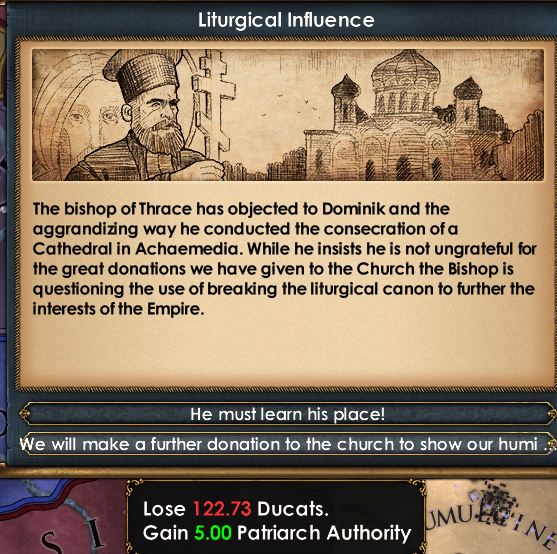
















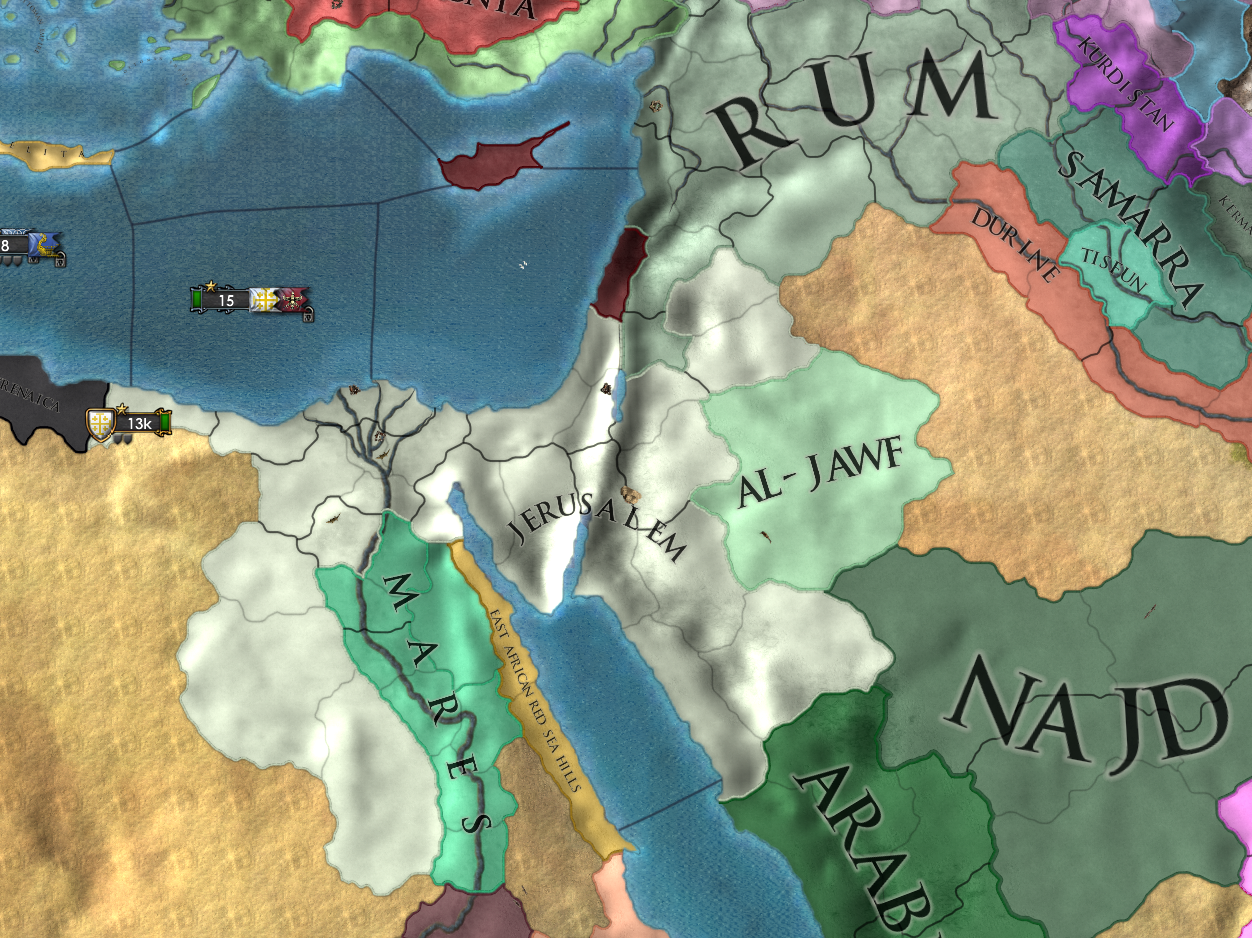












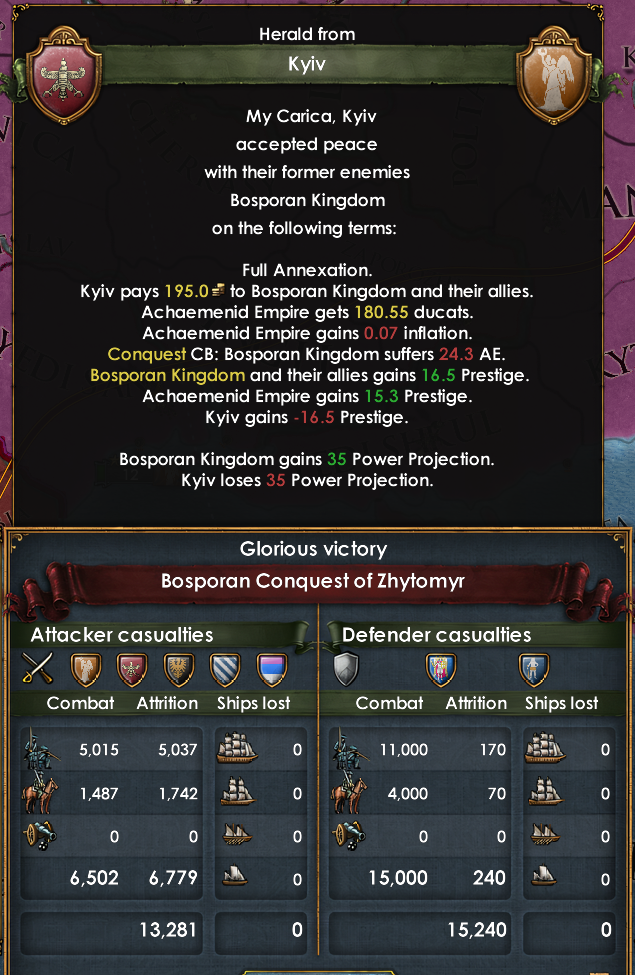









































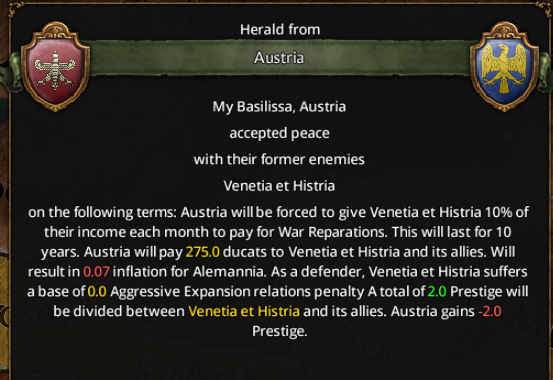











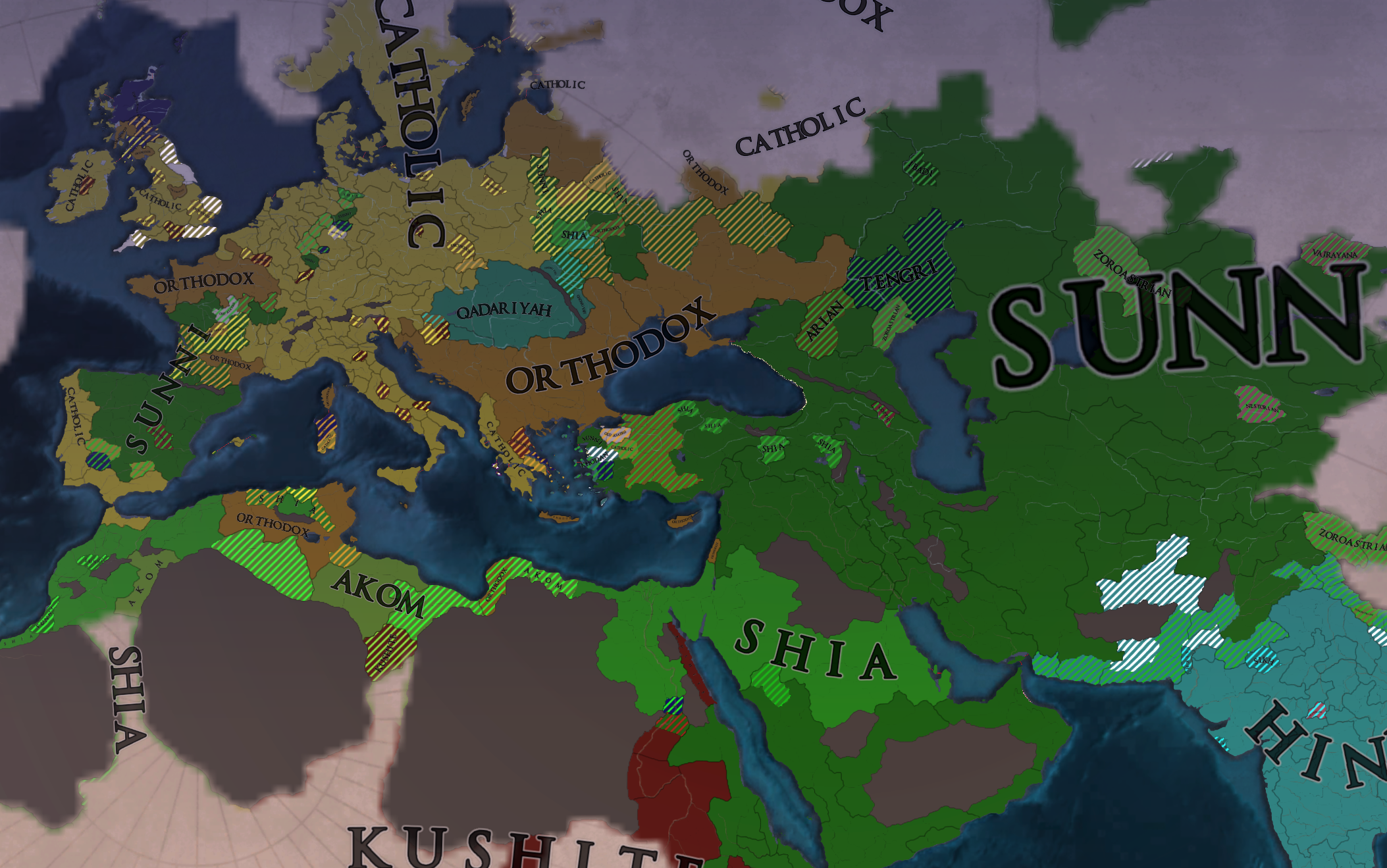

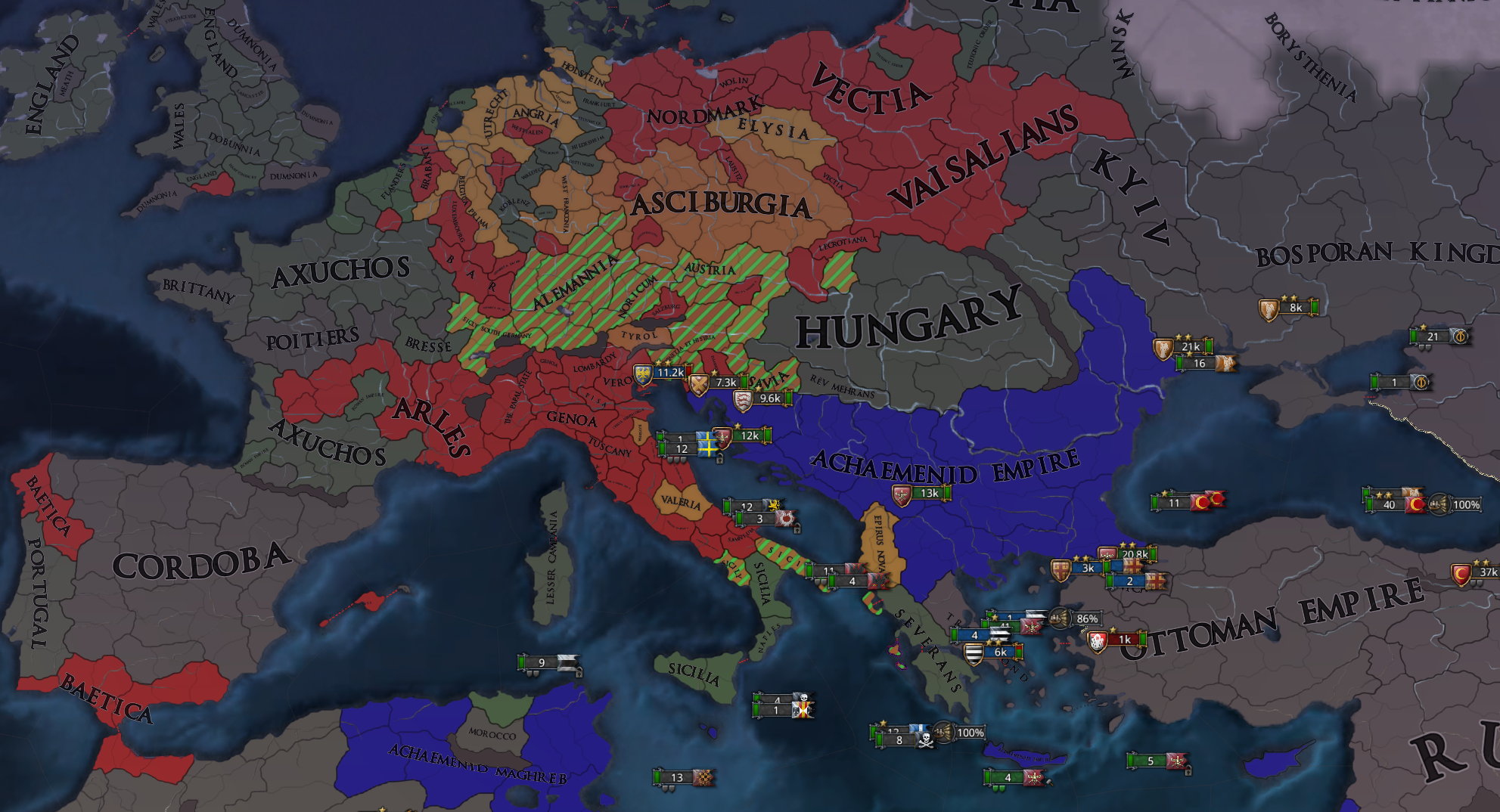









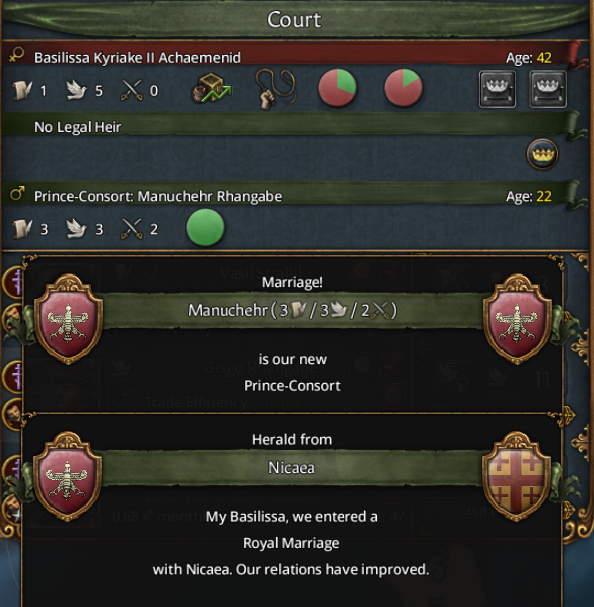









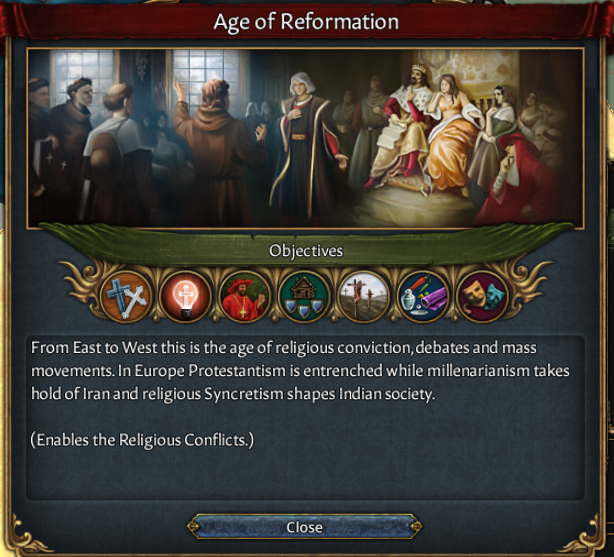

.png)

